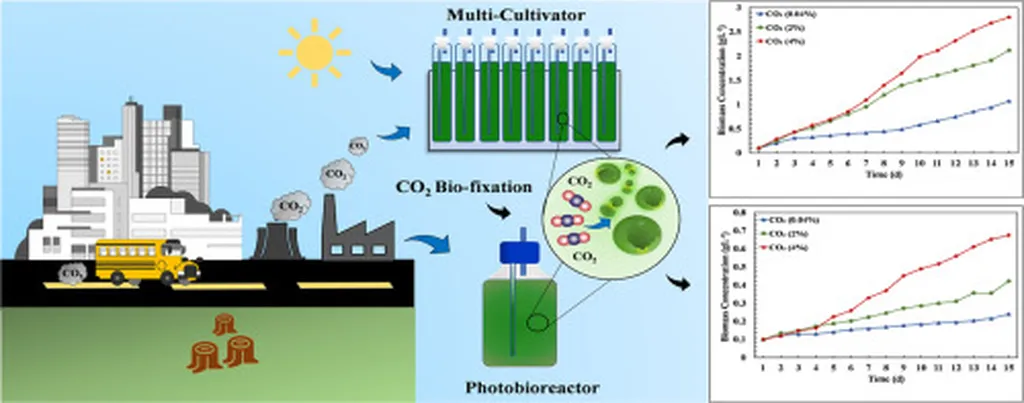In the bustling world of environmental biotechnology, a groundbreaking discovery has emerged from the Institute of Marine and Environmental Technology in Baltimore, Maryland. Lauren Jonas, the lead author of a recent study published in the journal mBio (which translates to Microbial Biology), has uncovered two novel bacteria that could reshape our understanding of carbon capture and microalgae symbiosis.
The study focuses on two microalgae strains optimized for growth in flue gas environments, where carbon dioxide levels range from 5% to 10%. These microalgae are crucial for biotechnology and environmental applications, particularly in carbon sequestration. Jonas and her team conducted 16S rRNA gene sequencing to analyze the bacterial communities associated with these microalgae and found two dominant bacteria belonging to the Patescibacteria class. These bacteria, named Phycocordibacter aenigmaticus and Minusculum obligatum, are novel species that have never been classified beyond the class level.
The discovery is significant because Patescibacteria are known for their reduced genomes and metabolic limitations. Both bacteria possess genomes smaller than 800 kilobase pairs and lack complete pathways for glycolysis and the tricarboxylic acid (TCA) cycle. Instead, they rely on the reductive pentose phosphate pathway, also known as the Calvin cycle, for essential biosynthesis and redox balance. “These bacteria are incredibly specialized and seem to have a symbiotic relationship with the microalgae,” Jonas explained. “Their extreme metabolic limitations suggest they depend on other bacteria associated with the microalgae for survival.”
The implications for the energy sector are profound. Microalgae are already being explored for their potential in carbon capture and biofuel production. Understanding the role of these novel bacteria could enhance the efficiency of microalgae-based carbon sequestration systems. “The dominance of these bacteria in both freshwater and marine microalgal cultures, regardless of the CO2 levels, suggests a tight and possibly obligate association,” Jonas noted. “This could open up new avenues for optimizing carbon capture technologies.”
The study also highlights the importance of long-read metagenomic sequencing, which allowed the researchers to assemble high-quality metagenomes for both Patescibacteria and five other bacteria in the system. This approach has enabled scientists to fill in gaps in the bacterial tree of life and contribute to the growing body of research on the scavenging metabolic nature of Patescibacteria.
As the world seeks innovative solutions to combat climate change, this discovery could pave the way for more efficient and effective carbon capture technologies. The energy sector, in particular, stands to benefit from a deeper understanding of these microbial interactions. “This research is just the beginning,” Jonas said. “There’s so much more to explore in the microbial world, and each discovery brings us one step closer to harnessing nature’s potential for a sustainable future.”
In the quest for cleaner energy and a healthier planet, the tiny world of microalgae and their bacterial symbionts might just hold the key.

